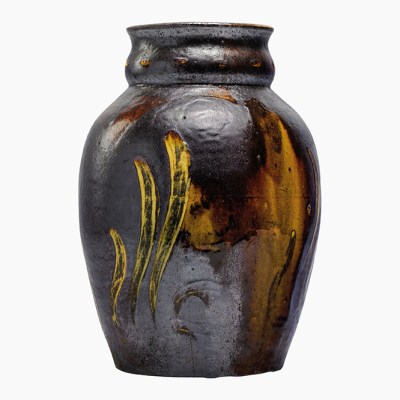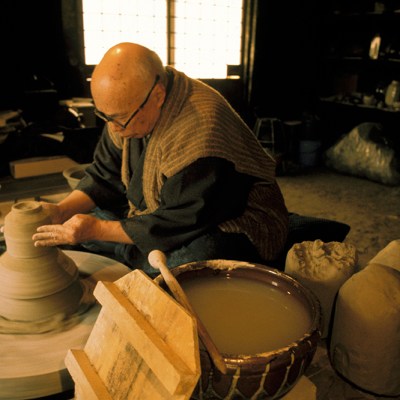From the May 2023 issue of Apollo. Preview and subscribe here.
‘I invite you to play a game. I suggest you are not here to see a house, not here to see pictures, porcelain or furniture. I propose you are here to feel a house. This calls on a different part of you to appreciate it.’ So the Californian native Dennis Severs (1948–99) would instruct paying visitors as they embarked on one of his idiosyncratic three-hour tours around his house in Spitalfields, east London. What David Hockney once described as ‘one of the world’s five greatest experiences’ involved being transported through time and through the rooms of the fictional Jervises, a family of Huguenot silk merchants who had moved into the house in 1725. It was less a historical recreation and more, as Severs put it, ‘a collection of atmospheres’ – complete with scents, sounds and sights to suggest the occupants had only just left: a steaming cup of tea or an overturned chair; a cough behind a door or the sound of a carriage.
Severs had acquired 18 Folgate Street in 1979 from the Spitalfields Trust, newly formed to snatch such derelict early Georgian houses from the jaws of demolition. He approached Folgate Street’s ‘restoration’ as a theatre impresario might: with smoke and mirrors, speed and economy. Chipboard and painted Perspex were put to good use; sumptuously draped beds were assembled with pallets from the local fruit market and loo-roll tubes; a high-relief plaster roundel in the entrance hall is in reality composed of plastic fruit bought at Tesco. But the accumulative effect – designed in the main to be seen by candlelight – amounts to a spectacular fantasy.
A tulip vase, or tulipière by Simon Pettet at Dennis Severs’ House. Photo: © Lucinda Douglas-Menzies

Those who did not appreciate it could be thrown out (Severs was ever the showman). But enough people did get it; perhaps none more so than an 18-year-old art student named Simon Pettet, who moved in to Folgate Street in 1983 and lived there for the best part of a decade. If this was a match made in Heaven in a literal sense – he and Severs met at the gay club in Charing Cross – it was also a providential creative pairing. Pettet was already a talented potter working for his degree at Camberwell School of Arts and Crafts; but the house drew from him a very particular response: blue-and-white Delft-style ceramics that soon became part of No. 18’s mise en scène. Here, then, next to a fireplace is a pair of floral-decorated shoes of the tin-glazed kind that often commemorated a betrothal or marriage in the 18th century; here a barber’s bowl, enlivened with illustrations of relevant implements – scissors, comb, razor, shaving brush – and round the wide rim the words ‘Edward Jervis – His Bowl’; or here the technical feat that is a tulipière.
These and other pieces by Pettet are being re-evaluated in an exhibition at the house curated by Rupert Thomas, former editor of the World of Interiors. Thomas first came across Pettet’s ceramics when they were featured in the magazine in the early 1990s; nevertheless, he says, ‘Whenever I came to the house I, like other people, assumed that lots of Simon’s pieces were real Delft. If you were being very sharp you might think, but if the Jervises are fictitious, how could that be Mr Jervis’s barber’s bowl? But that’s not how you come into this space; you come in to suspend your disbelief at the door.’
A hearth lined with blue-and-white tiles in the Master Bedroom looks safely of the antique variety, until close examination reveals modern scenes: a cat in front of a TV (Severs’ pet feline Whitechapel watching Come Dancing); Queen Elizabeth with two corgis; someone in flagrante in the back of a Porsche. Many of these 56 vignettes feature local friends and characters. The Gentrification Piece, as Pettet and Severs named the series, ‘picks up on the fact that the area during their time is changing,’ Thomas says. ‘There is an influx of people who – even if they’re not moneyed – are more aware of what’s being lost and what they can save.’ Gilbert & George, Spitalfields residents since the 1960s, are here – ingeniously depicted by Pettet to evoke, Thomas suggests, John Tenniel’s illustration of Tweedledum and Tweedledee.
Portrait of Gilbert & George from The Gentrification Piece (1985) by Simon Pettet at Dennis Severs’ House in Spitalfields, London. Photo: © Lucinda Douglas-Menzies

In extracting Pettet’s work from the Jervises’ paraphernalia – the bright yellow of his beloved bike, which he emblazoned with Keith Haring stickers, has informed the colour of the plinths that will display many of his pieces – the exhibition also highlights the context in which these interiors were made. As Thomas says, ‘you’re not going into an untouched 18th-century house; you’re going into an 18th-century house via the imagination of a gay man from the 1980s. When you know that, it suddenly all becomes more nuanced and interesting.’
Pettet died at the tragically young age of 28, having been diagnosed HIV-positive some years before. Of his work he once said: ‘The glaze on a tile is like fitting a glass hat on a flower. It’s extremely difficult to get right.’ Thirty years after his death, this timely exhibition recognises just how right he got it.
‘Making History: The Ceramic Work of Simon Pettet’ is at Dennis Severs’ House, London, from 4 May–4 June.
From the May 2023 issue of Apollo. Preview and subscribe here.


